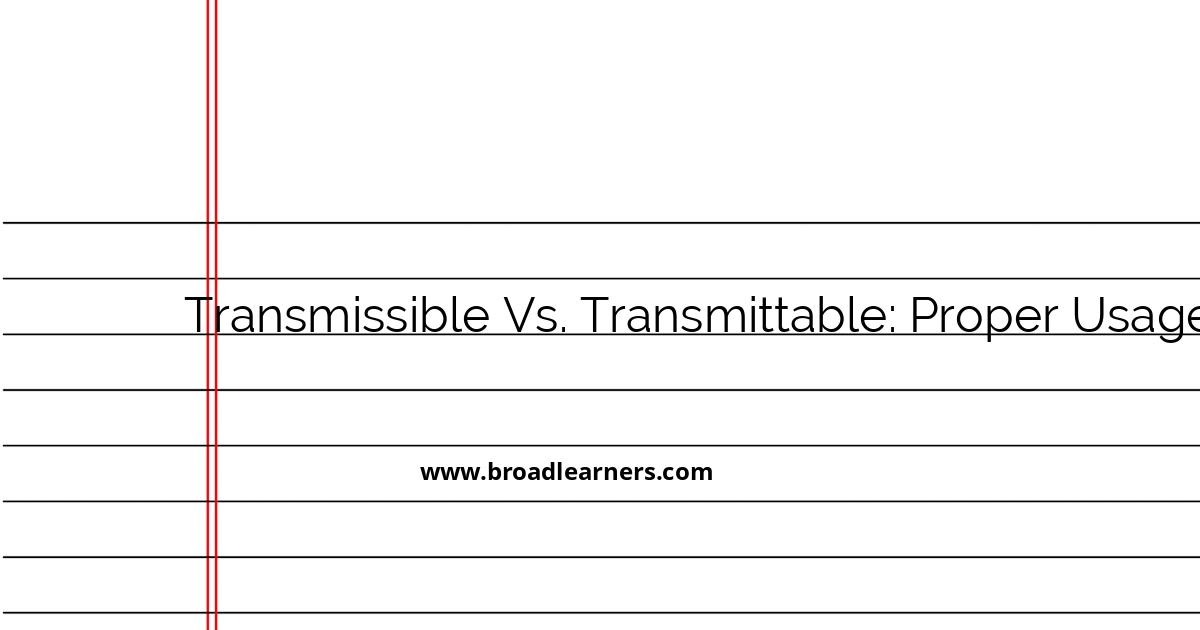The English language can often present challenges with words that seem similar but have distinct meanings or appropriate contexts for their use. Two such words are "transmissible" and "transmittable". Though they both relate to the concept of transmission, there are nuances in their proper application:
| Term | Definition | Usage Context |
|---|---|---|
| Transmissible | Refers to the capability of a disease or condition to be passed from one person or organism to another, especially through direct or indirect contact. | Typically used in medical or pathogenic contexts, focusing on the potential or manner of passing diseases. |
| Transmittable | Can also be passed from one individual to another but is more generally applicable to any kind of transmission, including signals, properties, or influences. | Broader than "transmissible," it can apply to non-medical fields such as electronics (e.g., radio signals) or ideas. |
Let us delve deeper into their specific uses and see practical examples for better understanding:
1. Transmissible
When discussing diseases, "transmissible" is preferred because it emphasizes the potential or capability of a pathogen spreading. It implies a mechanism or pathway through which a disease may propagate.
Example:
In public health discussions, you might encounter: "The flu is highly transmissible during the winter months when people are in close proximity."
This sentence highlights how the disease can spread among people, underscoring the necessity of preventative measures.
Another example is in legal documentation or medical warnings, where precision is critical:
"Certain genetic disorders, such as cystic fibrosis, are transmissible from parents to offspring through their genes."
2. Transmittable
The word "transmittable" extends beyond medical contexts and can apply to any context where transmission occurs. It covers a wider range of scenarios beyond the spread of pathogens, including non-physical entities.
Example:
Regarding technology and communication, one might say: "Radio waves are transmittable through a variety of mediums such as air and vacuum."
This sentence illustrates the broader applicability of the term beyond medical scenarios, describing the transmission of electromagnetic signals.
An example in cultural contexts might be:
"Cultural values and traditions are transmittable across generations through storytelling and education."
In conclusion, while "transmissible" and "transmittable" may seem interchangeable at first glance, their usage is best suited to specific contexts. Taking care to use the most appropriate term based on the situation—whether medical, technological, or cultural—will enhance the clarity and professionalism of your communication.

Did I miss anything? Respond below